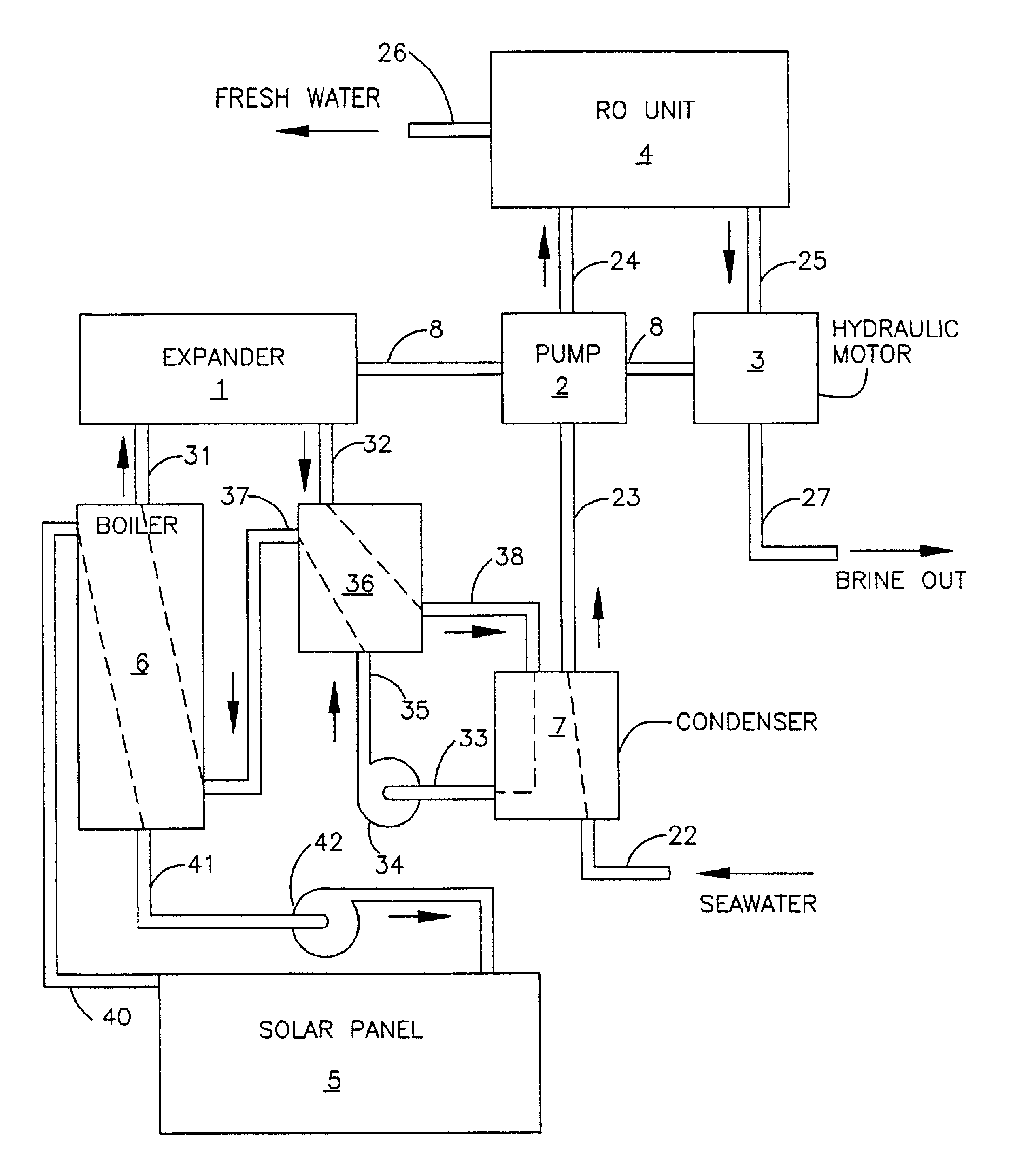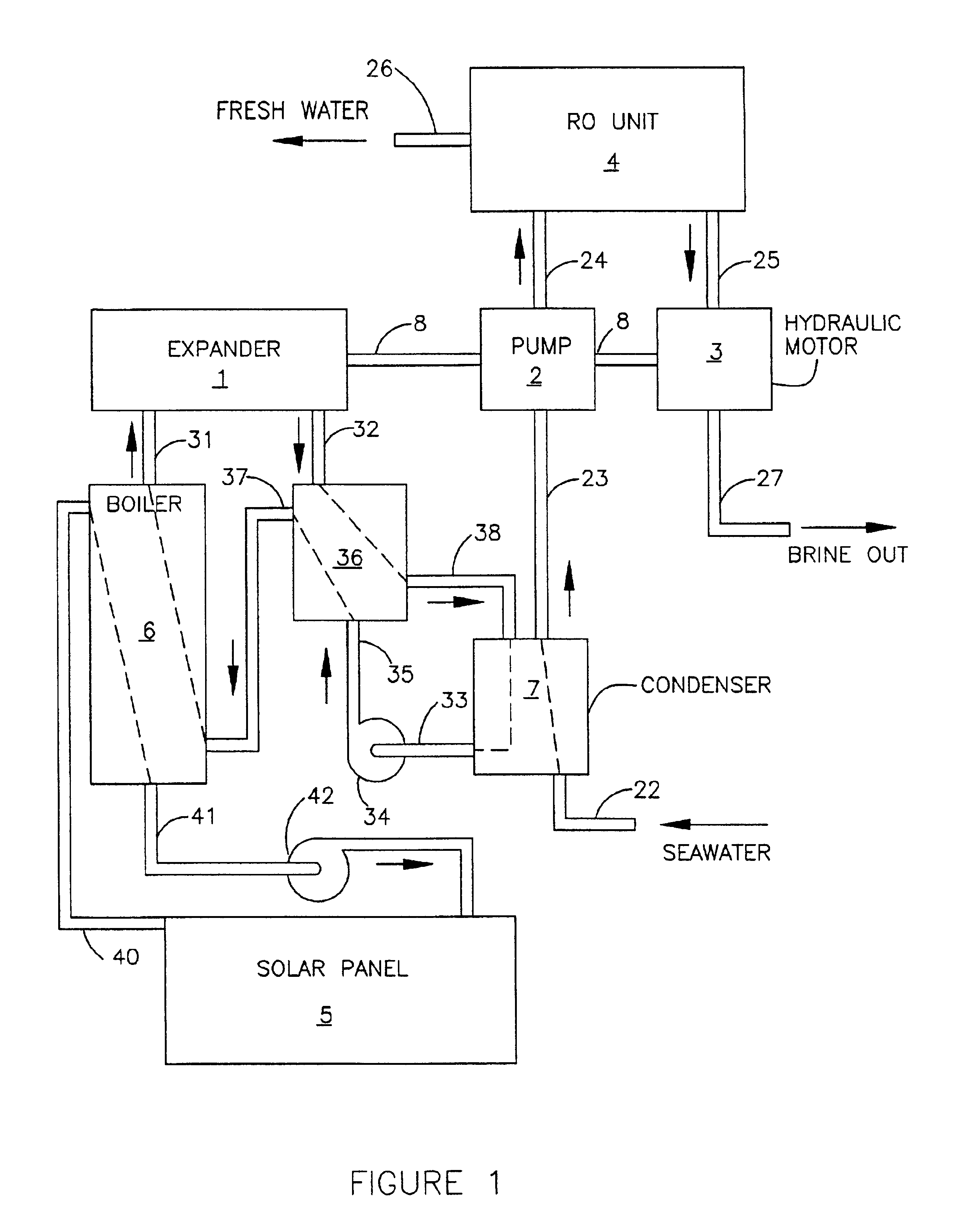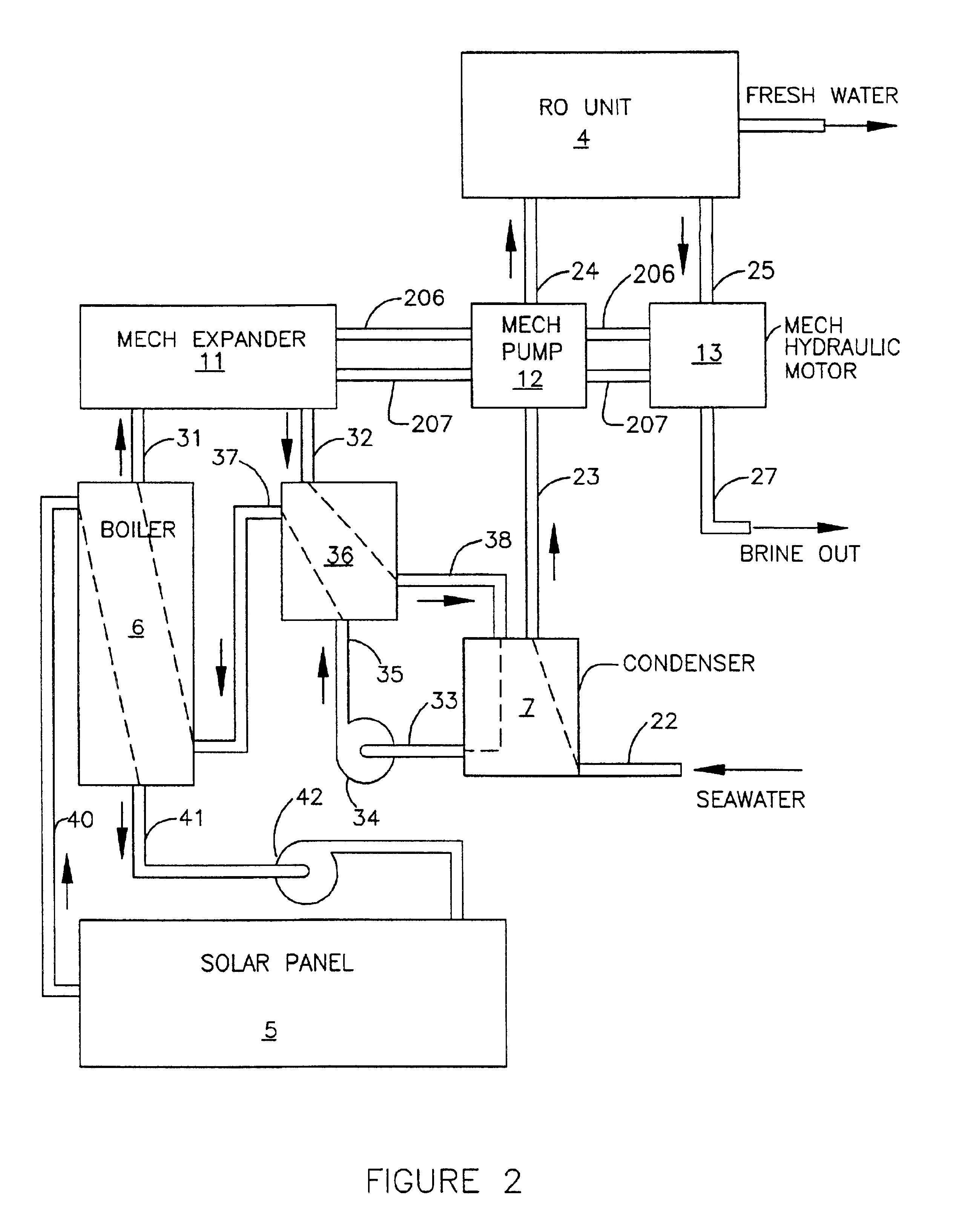Solar energy desalination system
a technology of solar energy and desalination system, which is applied in steam engine plants, machines/engines, propulsion parts, etc., can solve the problems of high energy cost of fresh water production, inefficient use of energy, and high cost of devices that harness that energy
- Summary
- Abstract
- Description
- Claims
- Application Information
AI Technical Summary
Benefits of technology
Problems solved by technology
Method used
Image
Examples
Embodiment Construction
This invention utilizes solar energy to boil a working fluid. High-pressure vapor from a boiler drives an expander, such as a piston device, a rotary vane motor, turbine, or other expander to drive a high-pressure pump that feeds brackish water (e.g., seawater and the like) into a reverse osmosis plant where some of the water is forced through an osmotic membrane to produce fresh water. In this disclosure and in the claims, "salty water" and "seawater" are used interchangeably, and both terms refer to the feed water that is desalinated by the invention. The water that does not flow through the membrane carries residual salt and becomes a more concentrated brine. This brine is still under high pressure. Its energy is recovered in a hydraulic recovery motor or by a direct-acting piston device.
Referring to FIG. 1, solar panel 5 collects thermal energy in a fluid, which could be water, air, or other fluid. The following discussion assumes that water is used. The water flows via pipe 40 ...
PUM
| Property | Measurement | Unit |
|---|---|---|
| boiling-point | aaaaa | aaaaa |
| motive force | aaaaa | aaaaa |
| pressure | aaaaa | aaaaa |
Abstract
Description
Claims
Application Information
 Login to View More
Login to View More - R&D
- Intellectual Property
- Life Sciences
- Materials
- Tech Scout
- Unparalleled Data Quality
- Higher Quality Content
- 60% Fewer Hallucinations
Browse by: Latest US Patents, China's latest patents, Technical Efficacy Thesaurus, Application Domain, Technology Topic, Popular Technical Reports.
© 2025 PatSnap. All rights reserved.Legal|Privacy policy|Modern Slavery Act Transparency Statement|Sitemap|About US| Contact US: help@patsnap.com



